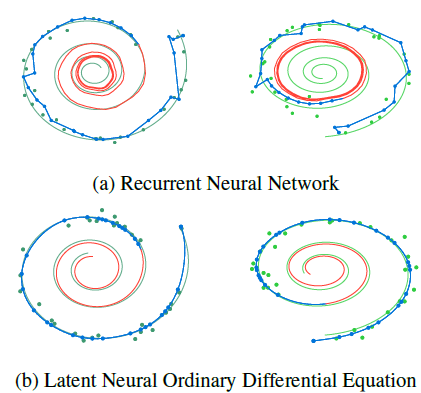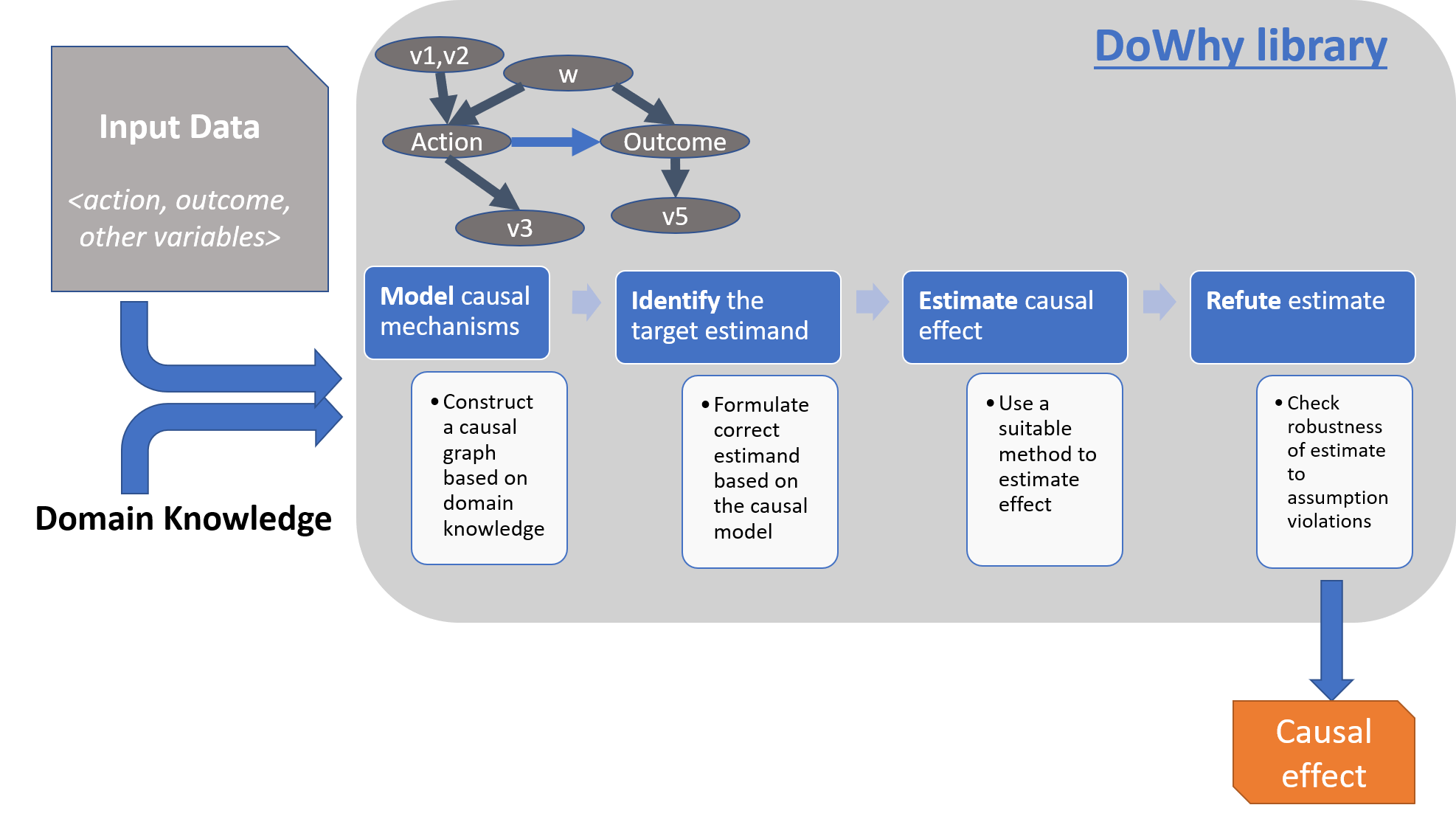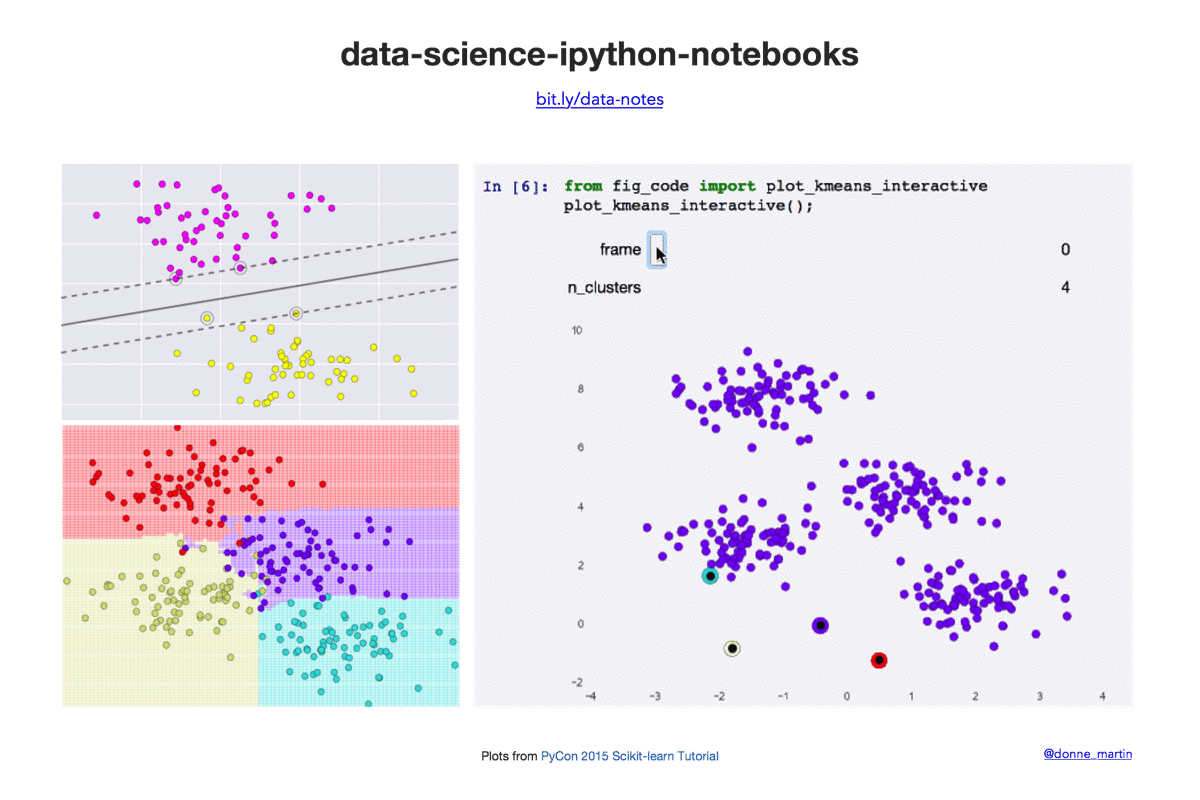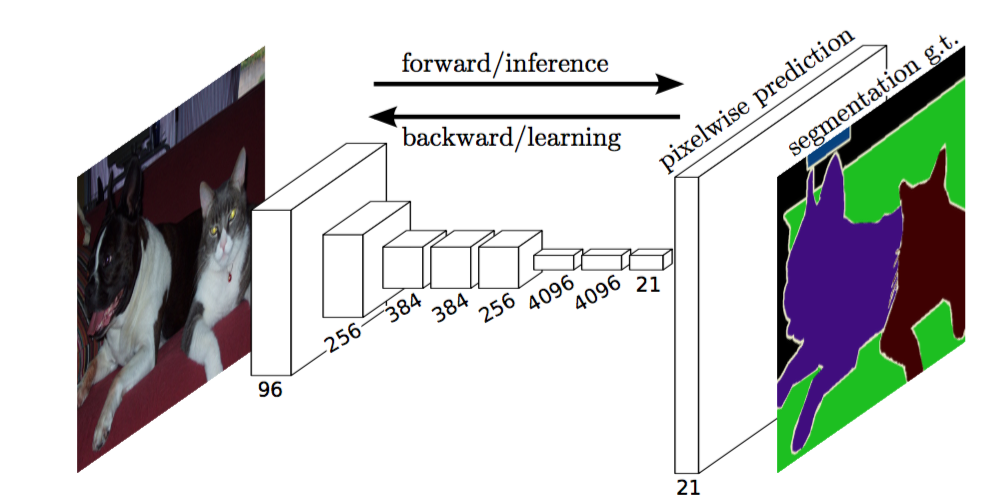3844 Repositories
Python pytorch-caffe-models Libraries

High performance distributed framework for training deep learning recommendation models based on PyTorch.
High performance distributed framework for training deep learning recommendation models based on PyTorch.

🛠️ Tools for Transformers compression using Lightning ⚡
Bert-squeeze is a repository aiming to provide code to reduce the size of Transformer-based models or decrease their latency at inference time.

PyTorch implementation for 3D human pose estimation
Towards 3D Human Pose Estimation in the Wild: a Weakly-supervised Approach This repository is the PyTorch implementation for the network presented in:

Official implementation of "OpenPifPaf: Composite Fields for Semantic Keypoint Detection and Spatio-Temporal Association" in PyTorch.
openpifpaf Continuously tested on Linux, MacOS and Windows: New 2021 paper: OpenPifPaf: Composite Fields for Semantic Keypoint Detection and Spatio-Te

A Pytorch implement of paper "Anomaly detection in dynamic graphs via transformer" (TADDY).
TADDY: Anomaly detection in dynamic graphs via transformer This repo covers an reference implementation for the paper "Anomaly detection in dynamic gr
Deploy pytorch classification model using Flask and Streamlit
Deploy pytorch classification model using Flask and Streamlit
vartests is a Python library to perform some statistic tests to evaluate Value at Risk (VaR) Models
vartests is a Python library to perform some statistic tests to evaluate Value at Risk (VaR) Models, such as: T-test: verify if mean of distribution i
Official PyTorch implementation of "Synthesis of Screentone Patterns of Manga Characters"
Manga Character Screentone Synthesis Official PyTorch implementation of "Synthesis of Screentone Patterns of Manga Characters" presented in IEEE ISM 2
Implementation of the master's thesis "Temporal copying and local hallucination for video inpainting".
Temporal copying and local hallucination for video inpainting This repository contains the implementation of my master's thesis "Temporal copying and

Pytorch implementation of forward and inverse Haar Wavelets 2D
Pytorch implementation of forward and inverse Haar Wavelets 2D

Fast, general, and tested differentiable structured prediction in PyTorch
Fast, general, and tested differentiable structured prediction in PyTorch
A clean and extensible PyTorch implementation of Masked Autoencoders Are Scalable Vision Learners
A clean and extensible PyTorch implementation of Masked Autoencoders Are Scalable Vision Learners A PyTorch re-implementation of Mask Autoencoder trai

A deep-learning pipeline for segmentation of ambiguous microscopic images.
Welcome to Official repository of deepflash2 - a deep-learning pipeline for segmentation of ambiguous microscopic images. Quick Start in 30 seconds se

PyTorch implementation of MulMON
MulMON This repository contains a PyTorch implementation of the paper: Learning Object-Centric Representations of Multi-object Scenes from Multiple Vi

PyTorch Implementation for Fracture Detection in Wrist Bone X-ray Images
wrist-d PyTorch Implementation for Fracture Detection in Wrist Bone X-ray Images note: Paper: Under Review at MPDI Diagnostics Submission Date: Novemb
Implementation of the paper Scalable Intervention Target Estimation in Linear Models (NeurIPS 2021), and the code to generate simulation results.
Scalable Intervention Target Estimation in Linear Models Implementation of the paper Scalable Intervention Target Estimation in Linear Models (NeurIPS

Integrated Semantic and Phonetic Post-correction for Chinese Speech Recognition
Integrated Semantic and Phonetic Post-correction for Chinese Speech Recognition | paper | dataset | pretrained detection model | Authors: Yi-Chang Che

KAPAO is an efficient multi-person human pose estimation model that detects keypoints and poses as objects and fuses the detections to predict human poses.
KAPAO (Keypoints and Poses as Objects) KAPAO is an efficient single-stage multi-person human pose estimation model that models keypoints and poses as
Point detection through multi-instance deep heatmap regression for sutures in endoscopy
Suture detection PyTorch This repo contains the reference implementation of suture detection model in PyTorch for the paper Point detection through mu
Improving the robustness and performance of biomedical NLP models through adversarial training
RobustBioNLP Improving the robustness and performance of biomedical NLP models through adversarial training In this repository you can find suppliment
Source code for paper "Deep Diffusion Models for Robust Channel Estimation", TBA.
diffusion-channels Source code for paper "Deep Diffusion Models for Robust Channel Estimation". Generic flow: Use 'matlab/main.mat' to generate traini
Extracting knowledge graphs from language models as a diagnostic benchmark of model performance.
Interpreting Language Models Through Knowledge Graph Extraction Idea: How do we interpret what a language model learns at various stages of training?

PyTorch code for the ICCV'21 paper: "Always Be Dreaming: A New Approach for Class-Incremental Learning"
Always Be Dreaming: A New Approach for Data-Free Class-Incremental Learning PyTorch code for the ICCV 2021 paper: Always Be Dreaming: A New Approach f
AfriBERTa: Exploring the Viability of Pretrained Multilingual Language Models for Low-resourced Languages
AfriBERTa: Exploring the Viability of Pretrained Multilingual Language Models for Low-resourced Languages This repository contains the code for the pa

AOT (Associating Objects with Transformers) in PyTorch
An efficient modular implementation of Associating Objects with Transformers for Video Object Segmentation in PyTorch

Scikit learn library models to account for data and concept drift.
liquid_scikit_learn Scikit learn library models to account for data and concept drift. This python library focuses on solving data drift and concept d
An implementation of Group Fisher Pruning for Practical Network Compression based on pytorch and mmcv
FisherPruning-Pytorch An implementation of Group Fisher Pruning for Practical Network Compression based on pytorch and mmcv Main Functions Pruning f

MMFlow is an open source optical flow toolbox based on PyTorch
Documentation: https://mmflow.readthedocs.io/ Introduction English | 简体中文 MMFlow is an open source optical flow toolbox based on PyTorch. It is a part
Library of Stan Models for Survival Analysis
survivalstan: Survival Models in Stan author: Jacki Novik Overview Library of Stan Models for Survival Analysis Features: Variety of standard survival

PySurvival is an open source python package for Survival Analysis modeling
PySurvival What is Pysurvival ? PySurvival is an open source python package for Survival Analysis modeling - the modeling concept used to analyze or p

Python package for causal inference using Bayesian structural time-series models.
Python Causal Impact Causal inference using Bayesian structural time-series models. This package aims at defining a python equivalent of the R CausalI

DoWhy is a Python library for causal inference that supports explicit modeling and testing of causal assumptions. DoWhy is based on a unified language for causal inference, combining causal graphical models and potential outcomes frameworks.
DoWhy | An end-to-end library for causal inference Amit Sharma, Emre Kiciman Introducing DoWhy and the 4 steps of causal inference | Microsoft Researc

DrWhy is the collection of tools for eXplainable AI (XAI). It's based on shared principles and simple grammar for exploration, explanation and visualisation of predictive models.
Responsible Machine Learning With Great Power Comes Great Responsibility. Voltaire (well, maybe) How to develop machine learning models in a responsib
Fit interpretable models. Explain blackbox machine learning.
InterpretML - Alpha Release In the beginning machines learned in darkness, and data scientists struggled in the void to explain them. Let there be lig
AdaNet is a lightweight TensorFlow-based framework for automatically learning high-quality models with minimal expert intervention
AdaNet is a lightweight TensorFlow-based framework for automatically learning high-quality models with minimal expert intervention. AdaNet buil

An open source AutoML toolkit for automate machine learning lifecycle, including feature engineering, neural architecture search, model compression and hyper-parameter tuning.
NNI Doc | 简体中文 NNI (Neural Network Intelligence) is a lightweight but powerful toolkit to help users automate Feature Engineering, Neural Architecture

A clean implementation based on AlphaZero for any game in any framework + tutorial + Othello/Gobang/TicTacToe/Connect4 and more
Alpha Zero General (any game, any framework!) A simplified, highly flexible, commented and (hopefully) easy to understand implementation of self-play
Transform ML models into a native code with zero dependencies
m2cgen (Model 2 Code Generator) - is a lightweight library which provides an easy way to transpile trained statistical models into a native code

BentoML is a flexible, high-performance framework for serving, managing, and deploying machine learning models.
Model Serving Made Easy BentoML is a flexible, high-performance framework for serving, managing, and deploying machine learning models. Supports multi

Data science Python notebooks: Deep learning (TensorFlow, Theano, Caffe, Keras), scikit-learn, Kaggle, big data (Spark, Hadoop MapReduce, HDFS), matplotlib, pandas, NumPy, SciPy, Python essentials, AWS, and various command lines.
Data science Python notebooks: Deep learning (TensorFlow, Theano, Caffe, Keras), scikit-learn, Kaggle, big data (Spark, Hadoop MapReduce, HDFS), matplotlib, pandas, NumPy, SciPy, Python essentials, AWS, and various command lines.

Gated-Shape CNN for Semantic Segmentation (ICCV 2019)
GSCNN This is the official code for: Gated-SCNN: Gated Shape CNNs for Semantic Segmentation Towaki Takikawa, David Acuna, Varun Jampani, Sanja Fidler
PyTorch implementation of UNet++ (Nested U-Net).
PyTorch implementation of UNet++ (Nested U-Net) This repository contains code for a image segmentation model based on UNet++: A Nested U-Net Architect

Code for our paper "Multi-scale Guided Attention for Medical Image Segmentation"
Medical Image Segmentation with Guided Attention This repository contains the code of our paper: "'Multi-scale self-guided attention for medical image

This repository contains the reference implementation for our proposed Convolutional CRFs.
ConvCRF This repository contains the reference implementation for our proposed Convolutional CRFs in PyTorch (Tensorflow planned). The two main entry-

CCNet: Criss-Cross Attention for Semantic Segmentation (TPAMI 2020 & ICCV 2019).
CCNet: Criss-Cross Attention for Semantic Segmentation Paper Links: Our most recent TPAMI version with improvements and extensions (Earlier ICCV versi

Using modified BiSeNet for face parsing in PyTorch
face-parsing.PyTorch Contents Training Demo References Training Prepare training data: -- download CelebAMask-HQ dataset -- change file path in the pr

Fast, modular reference implementation and easy training of Semantic Segmentation algorithms in PyTorch.
TorchSeg This project aims at providing a fast, modular reference implementation for semantic segmentation models using PyTorch. Highlights Modular De

BiSeNet based on pytorch
BiSeNet BiSeNet based on pytorch 0.4.1 and python 3.6 Dataset Download CamVid dataset from Google Drive or Baidu Yun(6xw4). Pretrained model Download

Learning to Adapt Structured Output Space for Semantic Segmentation, CVPR 2018 (spotlight)
Learning to Adapt Structured Output Space for Semantic Segmentation Pytorch implementation of our method for adapting semantic segmentation from the s
code and models for "Laplacian Pyramid Reconstruction and Refinement for Semantic Segmentation"
Laplacian Pyramid Reconstruction and Refinement for Semantic Segmentation This repository contains code and models for the method described in: Golnaz

PyTorch implementation of PSPNet
PSPNet with PyTorch Unofficial implementation of "Pyramid Scene Parsing Network" (https://arxiv.org/abs/1612.01105). This repository is just for caffe

Pytorch code for semantic segmentation using ERFNet
ERFNet (PyTorch version) This code is a toolbox that uses PyTorch for training and evaluating the ERFNet architecture for semantic segmentation. For t
The repository contains source code and models to use PixelNet architecture used for various pixel-level tasks. More details can be accessed at http://www.cs.cmu.edu/~aayushb/pixelNet/.
PixelNet: Representation of the pixels, by the pixels, and for the pixels. We explore design principles for general pixel-level prediction problems, f
DilatedNet in Keras for image segmentation
Keras implementation of DilatedNet for semantic segmentation A native Keras implementation of semantic segmentation according to Multi-Scale Context A
PyTorch implementation of ENet
PyTorch-ENet PyTorch (v1.1.0) implementation of ENet: A Deep Neural Network Architecture for Real-Time Semantic Segmentation, ported from the lua-torc
ENet: A Deep Neural Network Architecture for Real-Time Semantic Segmentation
ENet in Caffe Execution times and hardware requirements Network 1024x512 1280x720 Parameters Model size (fp32) ENet 20.4 ms 32.9 ms 0.36 M 1.5 MB SegN

Semantic segmentation task for ADE20k & cityscapse dataset, based on several models.
semantic-segmentation-tensorflow This is a Tensorflow implementation of semantic segmentation models on MIT ADE20K scene parsing dataset and Cityscape
Using fully convolutional networks for semantic segmentation with caffe for the cityscapes dataset
Using fully convolutional networks for semantic segmentation (Shelhamer et al.) with caffe for the cityscapes dataset How to get started Download the
Pytorch for Segmentation
Pytorch for Semantic Segmentation This repo has been deprecated currently and I will not maintain it. Meanwhile, I strongly recommend you can refer to

A higher performance pytorch implementation of DeepLab V3 Plus(DeepLab v3+)
A Higher Performance Pytorch Implementation of DeepLab V3 Plus Introduction This repo is an (re-)implementation of Encoder-Decoder with Atrous Separab
TorchCV: A PyTorch-Based Framework for Deep Learning in Computer Vision
TorchCV: A PyTorch-Based Framework for Deep Learning in Computer Vision @misc{you2019torchcv, author = {Ansheng You and Xiangtai Li and Zhen Zhu a

PyTorch implementation of DeepLab v2 on COCO-Stuff / PASCAL VOC
DeepLab with PyTorch This is an unofficial PyTorch implementation of DeepLab v2 [1] with a ResNet-101 backbone. COCO-Stuff dataset [2] and PASCAL VOC
PyTorch Implementations for DeeplabV3 and PSPNet
Pytorch-segmentation-toolbox DOC Pytorch code for semantic segmentation. This is a minimal code to run PSPnet and Deeplabv3 on Cityscape dataset. Shor
Deeplab-resnet-101 in Pytorch with Jaccard loss
Deeplab-resnet-101 Pytorch with Lovász hinge loss Train deeplab-resnet-101 with binary Jaccard loss surrogate, the Lovász hinge, as described in http:
DeepLab is a state-of-art deep learning system for semantic image segmentation built on top of Caffe.
DeepLab Introduction DeepLab is a state-of-art deep learning system for semantic image segmentation built on top of Caffe. It combines densely-compute
Implement slightly different caffe-segnet in tensorflow
Tensorflow-SegNet Implement slightly different (see below for detail) SegNet in tensorflow, successfully trained segnet-basic in CamVid dataset. Due t
Implementation of SegNet: A Deep Convolutional Encoder-Decoder Architecture for Semantic Pixel-Wise Labelling
Caffe SegNet This is a modified version of Caffe which supports the SegNet architecture As described in SegNet: A Deep Convolutional Encoder-Decoder A

Semantic segmentation models, datasets and losses implemented in PyTorch.
Semantic Segmentation in PyTorch Semantic Segmentation in PyTorch Requirements Main Features Models Datasets Losses Learning rate schedulers Data augm

Pytorch implementation of U-Net, R2U-Net, Attention U-Net, and Attention R2U-Net.
pytorch Implementation of U-Net, R2U-Net, Attention U-Net, Attention R2U-Net U-Net: Convolutional Networks for Biomedical Image Segmentation https://a
Segmentation models with pretrained backbones. Keras and TensorFlow Keras.
Python library with Neural Networks for Image Segmentation based on Keras and TensorFlow. The main features of this library are: High level API (just
UNet model with VGG11 encoder pre-trained on Kaggle Carvana dataset
TernausNet: U-Net with VGG11 Encoder Pre-Trained on ImageNet for Image Segmentation By Vladimir Iglovikov and Alexey Shvets Introduction TernausNet is

Real-Time Semantic Segmentation in Mobile device
Real-Time Semantic Segmentation in Mobile device This project is an example project of semantic segmentation for mobile real-time app. The architectur

Implementation of Segnet, FCN, UNet , PSPNet and other models in Keras.
Image Segmentation Keras : Implementation of Segnet, FCN, UNet, PSPNet and other models in Keras. Implementation of various Deep Image Segmentation mo

Modification of convolutional neural net "UNET" for image segmentation in Keras framework
ZF_UNET_224 Pretrained Model Modification of convolutional neural net "UNET" for image segmentation in Keras framework Requirements Python 3.*, Keras

PyTorch implementation of Federated Learning with Non-IID Data, and federated learning algorithms, including FedAvg, FedProx.
Federated Learning with Non-IID Data This is an implementation of the following paper: Yue Zhao, Meng Li, Liangzhen Lai, Naveen Suda, Damon Civin, Vik
PyTorch-LIT is the Lite Inference Toolkit (LIT) for PyTorch which focuses on easy and fast inference of large models on end-devices.
PyTorch-LIT PyTorch-LIT is the Lite Inference Toolkit (LIT) for PyTorch which focuses on easy and fast inference of large models on end-devices. With
A graph adversarial learning toolbox based on PyTorch and DGL.
GraphWar: Arms Race in Graph Adversarial Learning NOTE: GraphWar is still in the early stages and the API will likely continue to change. 🚀 Installat
![Models Supported: AlbUNet [18, 34, 50, 101, 152] (1D and 2D versions for Single and Multiclass Segmentation, Feature Extraction with supports for Deep Supervision and Guided Attention)](https://github.com/Sakib1263/AlbUNet-1D-2D-Tensorflow-Keras/raw/main/Documents/Images/AlbuNet.png)
Models Supported: AlbUNet [18, 34, 50, 101, 152] (1D and 2D versions for Single and Multiclass Segmentation, Feature Extraction with supports for Deep Supervision and Guided Attention)
AlbUNet-1D-2D-Tensorflow-Keras This repository contains 1D and 2D Signal Segmentation Model Builder for AlbUNet and several of its variants developed
Trainable PyTorch reproduction of AlphaFold 2
OpenFold A faithful PyTorch reproduction of DeepMind's AlphaFold 2. Features OpenFold carefully reproduces (almost) all of the features of the origina

Anime Face Detector using mmdet and mmpose
Anime Face Detector This is an anime face detector using mmdetection and mmpose. (To avoid copyright issues, I use generated images by the TADNE model

Official PyTorch Implementation for "Recurrent Video Deblurring with Blur-Invariant Motion Estimation and Pixel Volumes"
PVDNet: Recurrent Video Deblurring with Blur-Invariant Motion Estimation and Pixel Volumes This repository contains the official PyTorch implementatio

Boundary-aware Transformers for Skin Lesion Segmentation
Boundary-aware Transformers for Skin Lesion Segmentation Introduction This is an official release of the paper Boundary-aware Transformers for Skin Le

Official Pytorch implementation of RePOSE (ICCV2021)
RePOSE: Iterative Rendering and Refinement for 6D Object Detection (ICCV2021) [Link] Abstract We present RePOSE, a fast iterative refinement method fo
Python package to Create, Read, Write, Edit, and Visualize GSFLOW models
pygsflow pyGSFLOW is a python package to Create, Read, Write, Edit, and Visualize GSFLOW models API Documentation pyGSFLOW API documentation can be fo
Pytorch bindings for Fortran
Pytorch bindings for Fortran

This is a clean and robust Pytorch implementation of DQN and Double DQN.
DQN/DDQN-Pytorch This is a clean and robust Pytorch implementation of DQN and Double DQN. Here is the training curve: All the experiments are trained
Unofficial PyTorch implementation of Masked Autoencoders Are Scalable Vision Learners
Unofficial PyTorch implementation of Masked Autoencoders Are Scalable Vision Learners This repository is built upon BEiT, thanks very much! Now, we on
ResNEsts and DenseNEsts: Block-based DNN Models with Improved Representation Guarantees
ResNEsts and DenseNEsts: Block-based DNN Models with Improved Representation Guarantees This repository is the official implementation of the empirica

Luminous is a framework for testing the performance of Embodied AI (EAI) models in indoor tasks.
Luminous is a framework for testing the performance of Embodied AI (EAI) models in indoor tasks. Generally, we intergrete different kind of functional

PyTorch implementation for paper "Full-Body Visual Self-Modeling of Robot Morphologies".
Full-Body Visual Self-Modeling of Robot Morphologies Boyuan Chen, Robert Kwiatkowskig, Carl Vondrick, Hod Lipson Columbia University Project Website |

NDE: Climate Modeling with Neural Diffusion Equation, ICDM'21
Climate Modeling with Neural Diffusion Equation Introduction This is the repository of our accepted ICDM 2021 paper "Climate Modeling with Neural Diff

A Pytorch implementation of MoveNet from Google. Include training code and pre-train model.
Movenet.Pytorch Intro MoveNet is an ultra fast and accurate model that detects 17 keypoints of a body. This is A Pytorch implementation of MoveNet fro
Half Instance Normalization Network for Image Restoration
HINet Half Instance Normalization Network for Image Restoration, based on https://github.com/megvii-model/HINet. Dependencies NumPy PyTorch, preferabl

「PyTorch Implementation of AnimeGANv2」を用いて、生成した顔画像を元の画像に上書きするデモ
AnimeGANv2-Face-Overlay-Demo PyTorch Implementation of AnimeGANv2を用いて、生成した顔画像を元の画像に上書きするデモです。
Single machine, multiple cards training; mix-precision training; DALI data loader.
Template Script Category Description Category script comparison script train.py, loader.py for single-machine-multiple-cards training train_DP.py, tra

Official PyTorch implementation of NAC from the paper: Neural Auto-Curricula in Two-Player Zero-Sum Games.
NAC Official PyTorch implementation of NAC from the paper: Neural Auto-Curricula in Two-Player Zero-Sum Games. We release code for: Gradient based ora
A PyTorch Image-Classification With AlexNet And ResNet50.
PyTorch 图像分类 依赖库的下载与安装 在终端中执行 pip install -r -requirements.txt 完成项目依赖库的安装 使用方式 数据集的准备 STL10 数据集 下载:STL-10 Dataset 存储位置:将下载后的数据集中 train_X.bin,train_y.b
Predict the latency time of the deep learning models
Deep Neural Network Prediction Step 1. Genernate random parameters and Run them sequentially : $ python3 collect_data.py -gp -ep -pp -pl pooling -num
Algorithms for calibrating power grid distribution system models
Distribution System Model Calibration Algorithms The code in this library was developed by Sandia National Laboratories under funding provided by the

Yolov5 + Deep Sort with PyTorch
딥소트 수정중 Yolov5 + Deep Sort with PyTorch Introduction This repository contains a two-stage-tracker. The detections generated by YOLOv5, a family of obj